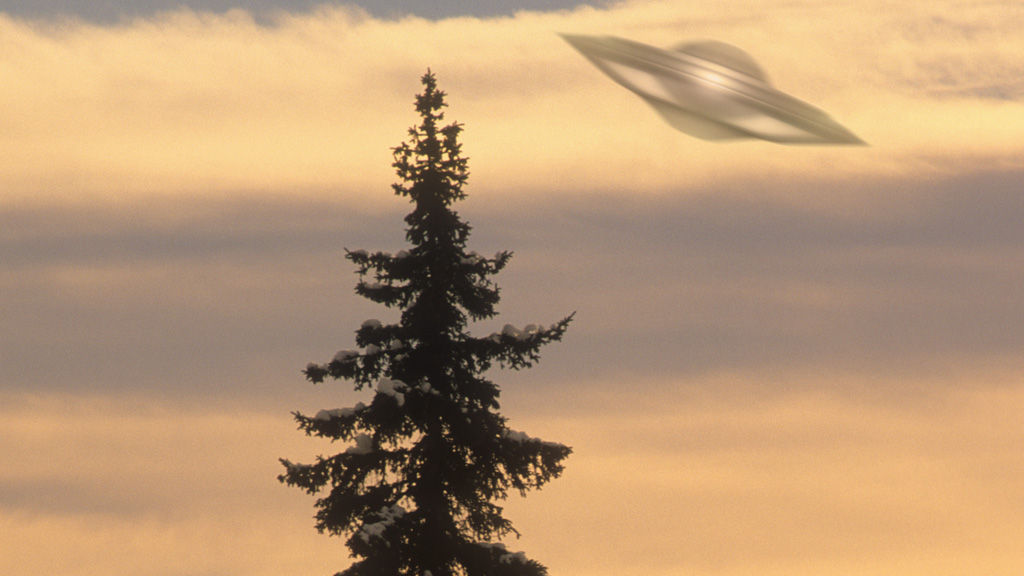UFO watchers consider future after decline in sightings
Britain’s UFO watchers will debate the future of research into extra-terrestrial activity as alien sightings take a downward spiral.

The occurrence of “significant UFO events” has dropped notably over the past two decades, according to an organisation involved in UFO research.
The Association for the Scientific Study of Anomalous Phenomena (Assap) has said this trend has become so extreme that the UFO debate now focuses on only a handful of events, including claims that a flying saucer crashed at Roswell in New Mexico in the 1940s.
Assap has also noted a change in the nature of reported sightings.
“Even when reputed physical evidence surfaces it takes novel and extreme forms, including cattle mutilations, alien implants and alien autopsies,” promotional literature for the conference on Assap’s website said.
The statement added that over the past 30 years classical sightings have been largely displaced by claims of UFO abductions, often recovered via hypnosis.
Conspiracy theories
“In 1972 UFO crashes were unknown or disregarded,” said Assap. “In 2012 they effectively dominate the subject.”
Assap added that the subject has become “significantly influenced by conspiracy theories whose implications take UFOlogy into extreme and alarming directions”.
The organisation is concerned that the debate has been polarised between those who firmly believe UFOs are extra terrestrials and fear that there is a cover-up over their presence and those who have declared the “death of the UFO”.
UFO enthusiasts concerns about the future of the discipline will be disussed at a meeting on 17 November.
But Nick Pope, who ran the MoD’s UFO desk from 1991 to 1994 and now researches UFO sightings privately, told the Sunday Telegraph that there is a future for the subject: “There’s a quantity versus quality issue here.
“So many UFO sightings these days are attributable to Chinese lanterns that more interesting sightings are sometimes overlooked.”
It’s life Jim, but not as we know it, Channel 4 News Science Editor, Tom Clarke, explains why UFO watchers should not give up hope just yet.
It is perhaps inevitable that ‘traditional’ UFO enthusiasts would have to abandon the faith. The little green men in flying saucers and unexplained lights in the sky just have not stood up to scrutiny. The same advances in science and technology that made them seem plausible have failed to confirm they exist.
But to me it seems a shame that the UFO hunters may be giving up at a time when we are closer than ever to finding life in other worlds.
Rather than hearing cries from distant aliens, radio telescopes found equally incredible messages from beaming pulsars and the faint echoes of the big bang itself.
In 1992 the idea of planets beyond our solar system – so called extrasolar planets – was purely theoretical. But now astronomers are now finding real lost worlds almost everywhere they look. As of the beginning of this week 843 planets in 665 planetary systems have been discovered… and counting.
Few of these planets are suitable for life as we know it, but many are close. Just last month an Earth-sized planet was discovered orbiting our nearest neighbouring star Alpha Centuri. And statistically, the odds of a world similar to ours aren’t bad at all.
Based on data from NASA’s planet-hunting Kepler telescope there could be 500 million Earth-like planets in our galaxy alone.
Estimates of the number of galaxies in the universe vary quite a bit, but we are talking hundreds of billions – you get the general idea. What’s more, the chemicals that make up the likely building-blocks of carbon-based life are being found in the furthest reaches of space.
This summer, Danish scientists discovered sugar molecules just floating in space around a star 400 light years away. And now too, we have unprecedented power to reach out and find life directly.
This week the Mars curiosity rover began the rather odd task of sniffing for methane on the surface of Mars. Detecting it could indicate the presence of belching bacterial life-forms within the soil.
So far, not a whiff. But the truth is out there.